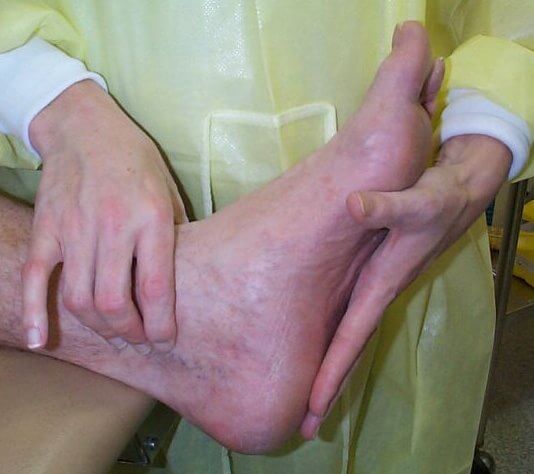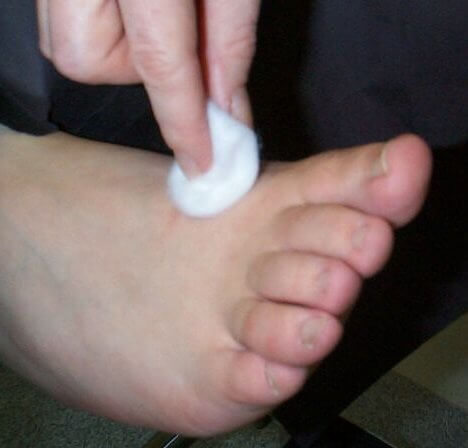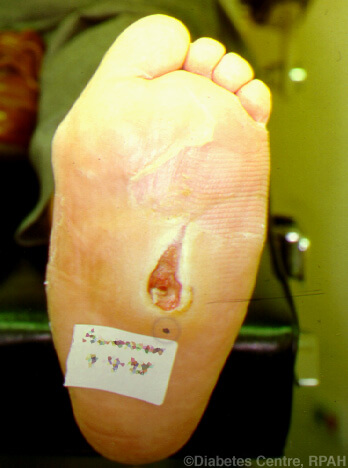Diabetes and foot care
Book a diabetic foot care appointment yearly Book Online
How does Diabetes affect my feet?
One of the first ways in which diabetes may affect your feet is through the loss of sensation, often starting at the toes. You may experience a cotton wool like feeling or numbness in your feet, this is called neuropathy. Your chances of losing feeling in your feet increases with the number of years that you have diabetes, and research suggests that up to one in three people with diabetes have some loss of sensation. The onset of neuropathy is gradual, and often people who develop this complication are unaware of it in the beginning. Often it occurs between 7 and 10 years of having diabetes, although in some cases it can occur sooner, where blood sugar levels have not been so well controlled.
If you have lost feelings in your feet then it is possible that you may unknowingly damage your feet. You may stand on sharp objects like a nail, piercing the skin even down to the bone without realising. If unnoticed and not treated appropriately this can have potentially serious consequences and could lead to an amputation. Such an outcome is less likely if you seek expert advice from your multi-disciplinary foot team.
This explains why your podiatrist checks your ability to feel pressures on the soles of your feet and toes every year. If you are forewarned that you have lost or are losing feeling then you will be able to reduce the risk of problems occurring by undertaking daily inspections of your feet and taking precautions such as not walking bare footed or sitting too close to fires.
Occasionally people with loss of feelings can sense a burning pain in their feet. This can be severe and is often worse at night. They can find contact from socks and shoes can cause discomfort. This is called painful peripheral neuropathy. If you experience these symptoms it is advisable to consult your Diabetic Clinic or Podiatrist, since it is possible in many cases to alleviate the symptoms.
Diabetes can also affect blood supply to and within your feet, this can delay healing and increase your risks of infection. Because the implications of poor blood supply can have serious consequences for your feet, your podiatrist will routinely screen your feet for signs of poor blood flow. If necessary you may be referred on to a vascular surgeon.
What does the Podiatrist look for?
Our Podiatrist will normally check both the blood supply to your feet and look for evidence of loss of sensation in your feet.

Blood supply will be checked by looking at the colour of the skin, checking the pulses in the feet and by asking questions about certain kinds of pains in your feet and legs. Normally people have two pulses in their feet, one of the top (dorsalis pedis) and one on the inside of the ankle (posterior tibial). At Fitter Feet For Life the podiatrist will check these pulses by feeling the pulse with their fingers. Sometimes they will use a small hand held scanner (called a Doppler) to listen to the pulse.

Sensation will most commonly be checked with a monofilament and tuning fork. The monofilament is a plastic probe that is designed to buckle at a given pressure, and is a good indicator for loss of feeling.
What is Pressure plate assessment?

Our podiatrist will also be looking for any foot deformity or signs of excessive loading that may warrant either footwear advice or in some cases an insole.

Some diabetic patients develop ulcers on their feet due to deformities or loss of sensation. By asking our patients to walk over a pressure plate we can measure the points of high pressure and an insole can be created to offload the areas of the foot which have high pressure. Foot Ulcers can be avoided in this way.

What is a Diabetic Foot Check at Fitter Feet For life?
If you are Diabetic and are worried about your feet, please book a ‘Diabetic Foot Check‘ by ringing our secretary on 0207 627 4901.
At this appointment we will
- Perform a Doppler assessment of the pulses in your feet to check your blood supply
- Test the function of all five nerves supplying your feet, to check you can feel your feet
- Perform a pressure plate test so see if you are in danger of developing foot ulcers, and advised you how to avoid ulcers occurring
- Give you a report; a copy can be sent to your GP
